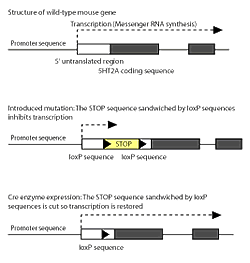Background
Transmission of serotonin, a neurotransmitter, to an adjacent neuron requires a receptor that accepts serotonin. There are more than ten known serotonin receptors, and each is thought to control a specific function in the body. However, the functional allotment between individual receptors is not well known.
The cerebral regions known to play important roles in anxiety are the cerebral cortex, ventral striatum, hippocampus and amygdala. It is in these areas that the serotonin receptor 5-HT2A, the receptor most likely involved in anxiety, is most abundant. Based on this premise, we prepared mice lacking the 5-HT2A receptor and investigated the relationship between the 5-HT2A receptor and anxiety.
Results of the Research and Its Significance
Our experiments showed that the 5-HT2A receptor-deficient mice had no anomalies in fear conditioning or in showing depression-like behaviors compared to controls as long as they could mitigate risk with only one option. Once multiple options were provided, however, 5-HT2A receptor-deficient mice would select the higher risk (anxiety) option without hesitation, while normal wild type mice, after some hesitation, would select the lower risk option.
When the 5-HT2A receptor function was restored in just the cerebral cortex, both strains behaved the same, avoiding the higher risk option. These results support the top-down role of cerebral cortex on risk evaluation. The ability to assess risk and act accordingly is a necessary survival skill in any animal, including humans, and our results are interesting in light of knowing how the brain processes and selects options based on need and perceived danger.
Future Expectations
Other reports on mice lacking the 5-HT1A receptor show that these animals demonstrate increased anxiety. However, we demonstrated that 5-HT2A receptor-deficient mice may have reduce anxiety behavior. At present, depression is treated with drugs that increase or decrease the intracerebral serotonin concentration with inconsistent effectiveness. This discrepancy may be due to the various types of serotonin receptors. Having shown that an intracerebral mechanism that is engaged in anxiety behavior might help find more effective treatments for anxiety and other affective disorders.
More detailed analyses of the functions of receptors in each region of the brain, from a molecular biological approach, will also contribute to therapeutic developments.







